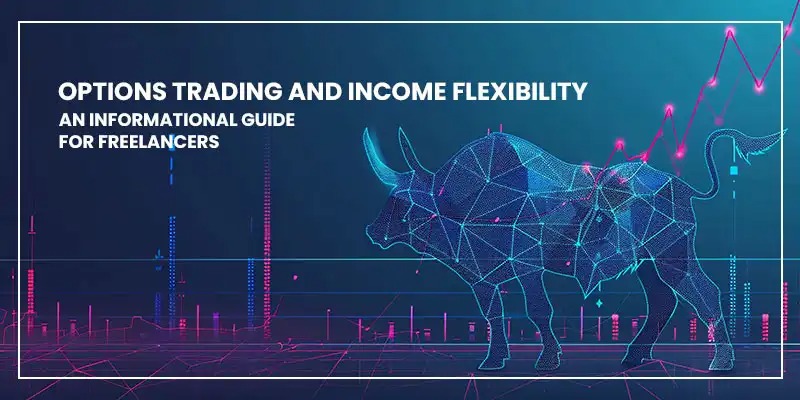Tailoring options trading strategies for irregular income earners involves understanding volatility in earnings, structuring positions to match varied cash flows, and maintaining prudent risk management. This article examines the framework for considering options in a flexible manner while highlighting standard risk disclaimers.
Contents
- Understanding Irregular Income Patterns
- Flexible Position Sizing and Capital Allocation
- Strategies To Address Income Variability
- Incorporating Stop-Losses and Adjusted Exits
- Evaluating Time Horizons and Market Conditions
- Maintaining a Trading Journal
- Conclusion
- FAQs
Understanding Irregular Income Patterns
This section explains how earnings fluctuations may influence financial planning considerations without making any strategy recommendations.
Freelancers often encounter fluctuating monthly earnings. This variability calls for a careful approach to options trading. Maintaining an adaptable trading strategy is essential when capital allocation does not follow a fixed pattern. Strategies must account for potential peaks and troughs without implying any guaranteed income. Risk statements must underscore that market movements can affect outcomes without ensuring consistent returns.
Read Also: 5 Key New Year Resolutions for Investors
Flexible Position Sizing and Capital Allocation
Some individuals with variable income may explore adjusting trade sizes based on available capital. This method is sometimes observed in market behavior but does not imply suitability or expected outcomes. When earnings are higher than average, position sizes may increase; conversely, reduced exposure can maintain financial stability during lean periods. This scaled approach aims to match trading activity with disposable income. Such adjustments should include clear risk control measures, ensuring that trades do not overextend available resources.
Risk Disclaimer: Trading options carries inherent uncertainties and may lead to losses reflecting overall market exposure.
Strategies To Address Income Variability
Implementing flexible strategies may involve a mix of long calls, protective puts, and spread techniques. These strategies are sometimes referenced in discussions on options trading. Their use varies across market conditions and does not assure any specific results. Vertical spreads allow trading with a capped exposure, making them potentially attractive to those adjusting their exposure based on current cash flow. It is important to emphasize that these descriptions are neutral observations, not recommendations.
Risk Disclaimer: Options strategies involve market exposure that may result in losses and do not represent a secure income stream.
Incorporating Stop-Losses and Adjusted Exits
Stop-loss orders and clear exit criteria can be particularly significant for those with variable income. Using defined exit points helps manage risk and avoids emotional trading decisions. Establishing predetermined exit points when volatility increases can be a helpful mechanism within an overall strategy. This method aims to assist in protecting capital during adverse market movements. Such elements are part of a structured strategy intended to align market exposure with individual cash-flow considerations.
Risk Disclaimer: Stop-loss orders do not guarantee a risk-free exit; market gaps or slippage might occur, affecting exit performance.
Evaluating Time Horizons and Market Conditions
Options trading may suit freelancers who can balance shorter-term trading with their income cycles. Evaluating underlying market conditions and setting realistic time horizons for each position is crucial. An adaptable approach involves reviewing open positions regularly and adjusting based on the evolving market trends and cash flow considerations. This assessment may support an understanding of how market activity aligns with individual review intervals. No timing method guarantees optimal results.
Risk Disclaimer: Market conditions change continuously and may affect the effectiveness of any defined strategy regardless of the chosen time horizon.
Maintaining a Trading Journal
Keeping a record of trades is beneficial for tracking performance, revisiting trading decisions, and understanding the impact of income fluctuations. Documenting entry points, exit points, and the rationale behind trade sizes supports a reflective review process. Maintaining discipline through a trading journal can contribute to a more organized approach, helping to align trading decisions with available earnings. This practice may also allow future strategies to adjust as trends become apparent over time.
Risk Disclaimer: Historical trading records do not predict future market behavior and may not guarantee future performance.
Read Also: 5 Investment Insights from The Mahabharata
Conclusion
The discussion presented outlines a flexible framework for considering options trading strategies that consider the challenges of irregular income. It highlights the importance of aligning position sizing, risk management, exit strategies, and ongoing trade documentation with fluctuations in available capital. This article provides a neutral overview intended solely for educational and informational purposes, incorporating necessary risk disclaimers. This article does not promote or discourage participation in options trading. Its purpose is to explain concepts neutrally without providing investment advice.
Disclaimer: Investment in the securities market is subject to market risks. Please read all scheme-related documents carefully before investing. The information provided in this article is for educational and informational purposes only and is not intended as investment advice. Trading in derivatives, including options, involves substantial risk and is not suitable for all investors. Past performance is not indicative of future results. Readers are advised to consult with their financial advisors before making any trading decisions.
FAQs
Position sizing is often examined as a method to align trading exposure with capital availability, but it involves individual judgment and does not assure any specific result.
Stop-loss mechanisms may help define potential exit points under certain market conditions. However, their effectiveness is not guaranteed due to market gaps or execution risks.
A trading journal documents trade decisions, performance, and adjustments needed, offering a structured review to align trading activity with variable income levels better.

